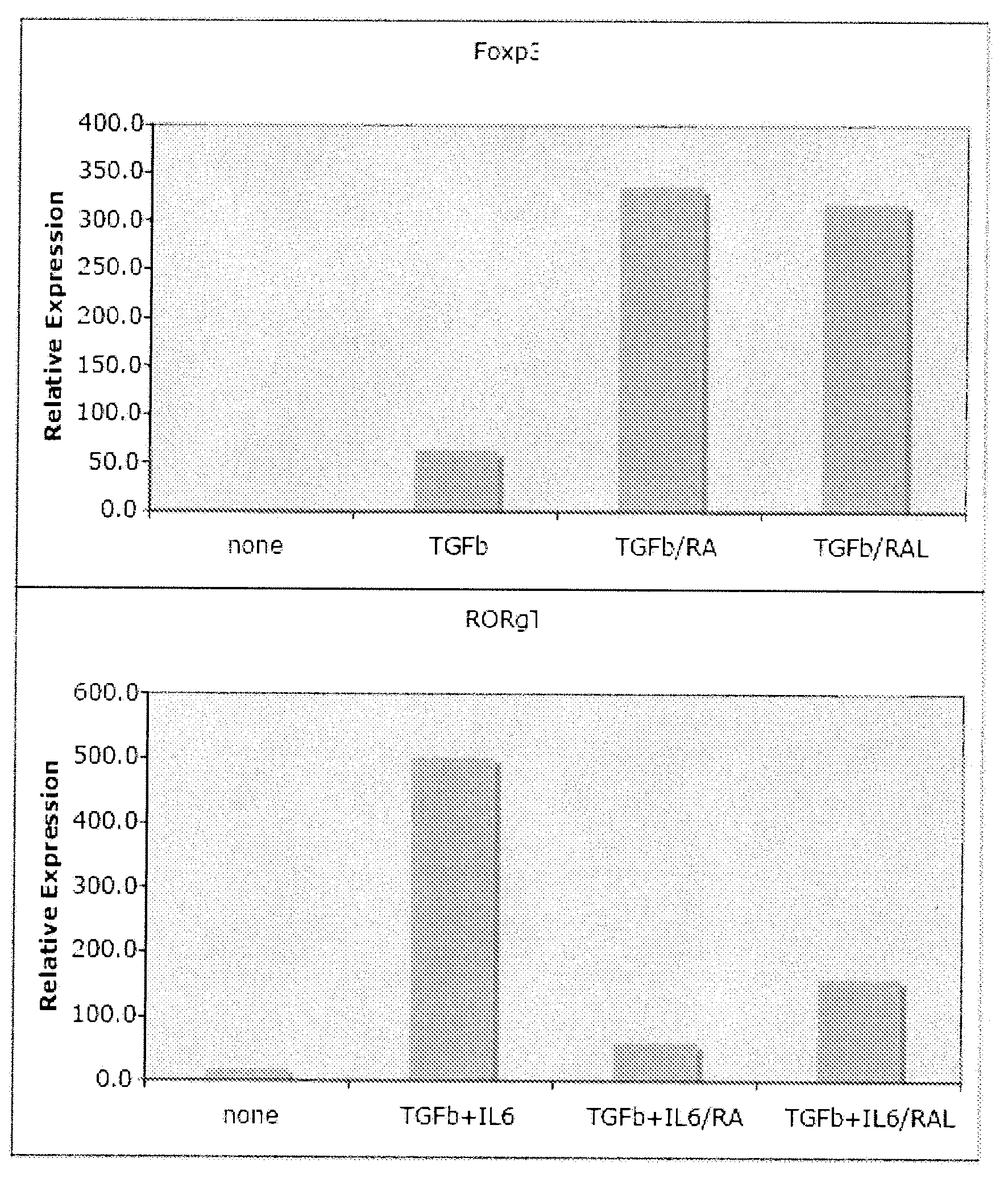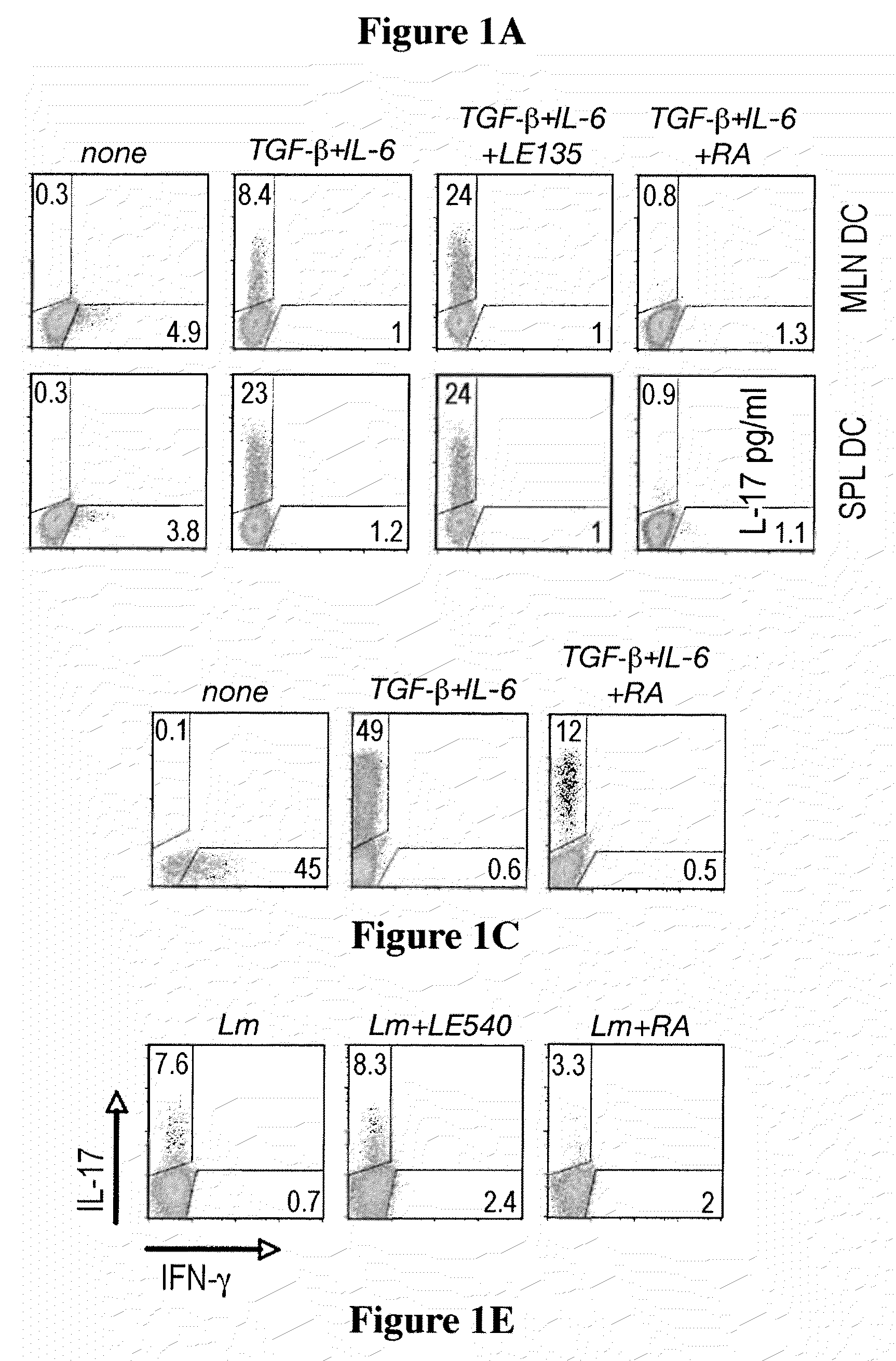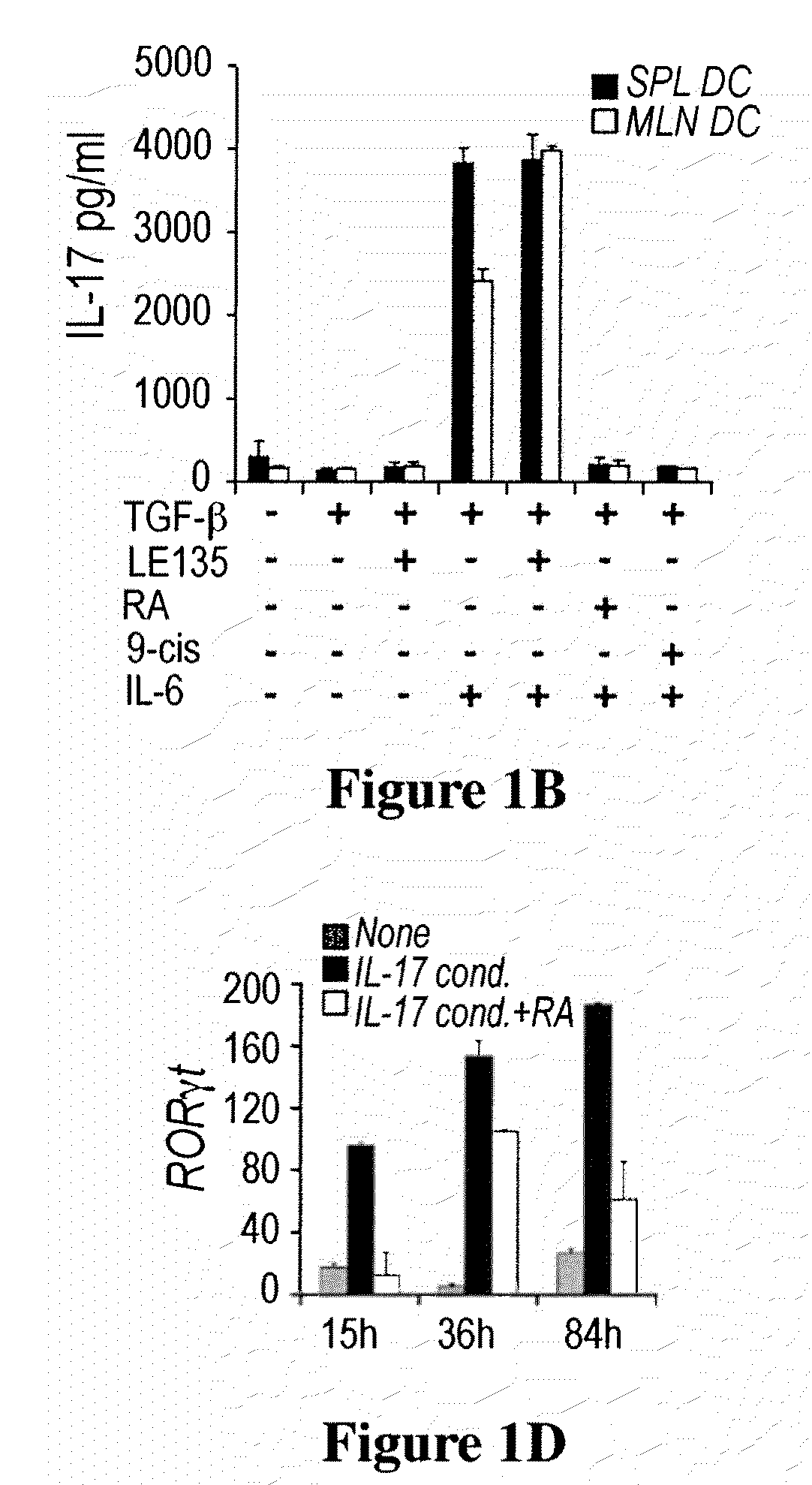Regulatory t cells and methods of making and using same
a technology of t cells and t cells, which is applied in the field of t cells for regulation, can solve the problems of inefficient induction of t cells by mucosal dcs
- Summary
- Abstract
- Description
- Claims
- Application Information
AI Technical Summary
Benefits of technology
Problems solved by technology
Method used
Image
Examples
example 1
[0150]This Example includes a description of various materials and methods.
Mice
[0151]C57BL / 6 CD45.1 (Ly5.1) and CD45.2 (Ly5.2), OT-I TCR-transgenic (C57BL / 6 background), RAG1− / − (C57BL / 6 background), B7.1 / 2 double-knockout (C57BL / 6 background) and IL-2− / − (C57BL / 6 background) mice were purchased from The Jackson Laboratories (USA). To obtain B7.1 / 2-IL-2 tripleknockout mice, B7.1 / 2− / − and IL-2− / − mice were crossed in our animal facility. OT-II CD90.1 TCR transgenic mice (C57BL / 6 background). Mice were maintained under specific pathogen-free conditions and sentinel mice from the RAG1− / −mice colony were tested to be negative for Helicobacter spp. and Citrobacter rodentium. Mice were used at 7-12 weeks of age. Animal care and experimentation were consistent with the NIH guidelines and were approved by the Institutional Animal Care and Use Committee at the La Jolla Institute for Allergy and Immunology.
Antibodies
[0152]The following mouse antibodies were purchased from BD-Biosciences (USA)...
example 2
[0169]This Example includes studies comparing the ability of gut-associated dendritic cells and peripheral dendritic cells in driving Th-17 differentiation.
[0170]IL-17 and IFN-γ staining of gated TCR Vβ5+CD4+ spleen cells from OT-II TCR transgenic mice was performed, as shown in FIG. 1A. CD4+CD25− cells were stimulated with OVAp and MLN or spleen (SPL) dendritic cells, and where indicated, with exogenous cytokines and LE135 or all-trans retinoic acid (RA). Intracellular staining of gated TCRβ+CD4+ cells for IL-17 and IFN-γ of polyclonal CD4+CD25− spleen T cells stimulated with soluble α-CD3 was performed, with irradiated spleen cells, and with added cytokines and RA as indicated in FIG. 2A. Mesenteric lymph node (MLN) dendritic cells and spleen dendritic cells were used to stimulate OVA peptide (OVAp) specific, OT-II TCR transgenic CD4 T cells (FIG. 1A), or α-CD3 stimulated polyclonal CD4 T cells (FIG. 2A). In the presence of IL-6 and TGF-β, MLN dendritic cells displayed reduced cap...
example 3
[0171]This example includes studies indicating that RA suppresses differentiation of Th-17 cells.
[0172]To study if the reduced capacity of MLN dendritic cells to drive Th-17 differentiation might also be controlled by RA, the RA receptor (RAR) antagonist, LE135 [Hashimoto, et. al., J Biol Chem 274, 15360 (1999)] was included during in vitro activation of T cells under conditions that promote Th-17 differentiation.
[0173]In addition to the studies represented in FIGS. 1A and 2A (discussed above), intracellular staining of gated TCRβ+CD4+ cells for IL-17 and IFN-γ of with OT-II TCR+CD4+CD25− spleen T cells stimulated with the relevant OVAp, sorted spleen CD11c+ dendritic cells and with added cytokines and 9-cis RA (100 nM) as indicated was also performed, gated on TCR Vβ5+CD4+ cells (FIG. 2B). In these studies, the relative inefficiency of MLN dendritic cells to mediate Th-17 differentiation was reversed, such that they primed T cells at levels similar to spleen dendritic cells. By com...
PUM
| Property | Measurement | Unit |
|---|---|---|
| Fraction | aaaaa | aaaaa |
| Acidity | aaaaa | aaaaa |
| Immunogenicity | aaaaa | aaaaa |
Abstract
Description
Claims
Application Information
 Login to View More
Login to View More - R&D
- Intellectual Property
- Life Sciences
- Materials
- Tech Scout
- Unparalleled Data Quality
- Higher Quality Content
- 60% Fewer Hallucinations
Browse by: Latest US Patents, China's latest patents, Technical Efficacy Thesaurus, Application Domain, Technology Topic, Popular Technical Reports.
© 2025 PatSnap. All rights reserved.Legal|Privacy policy|Modern Slavery Act Transparency Statement|Sitemap|About US| Contact US: help@patsnap.com



